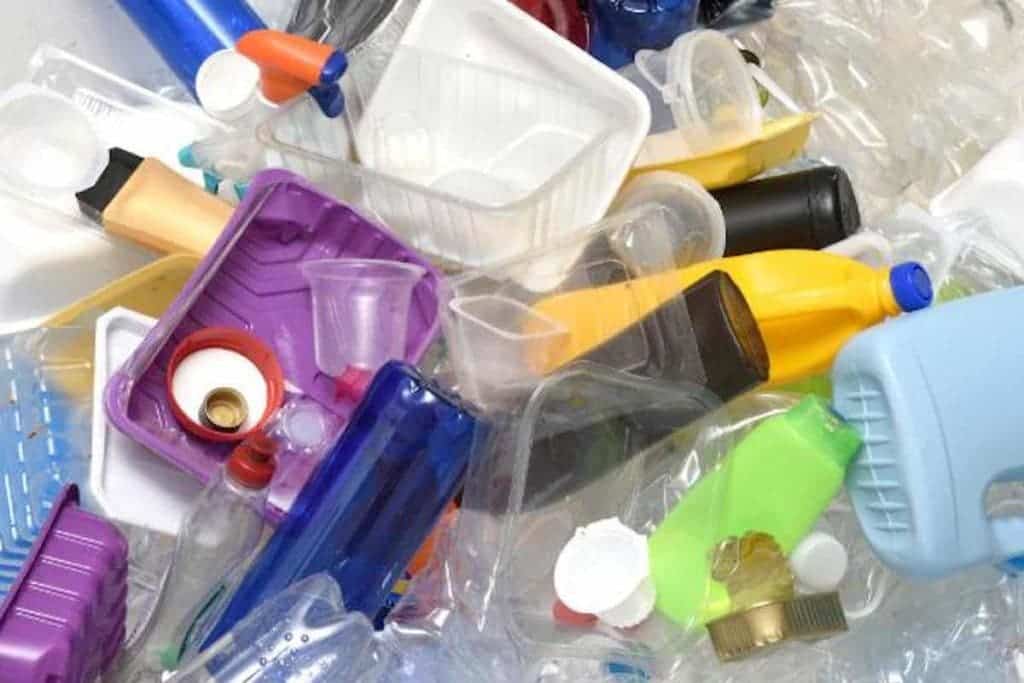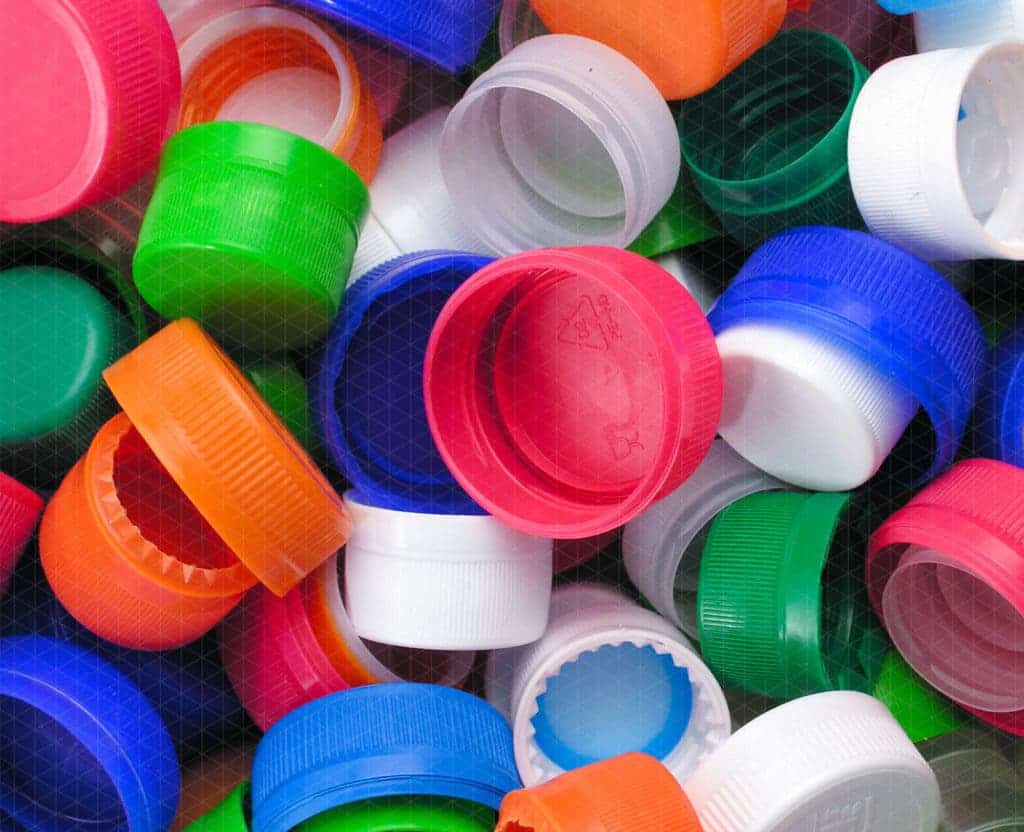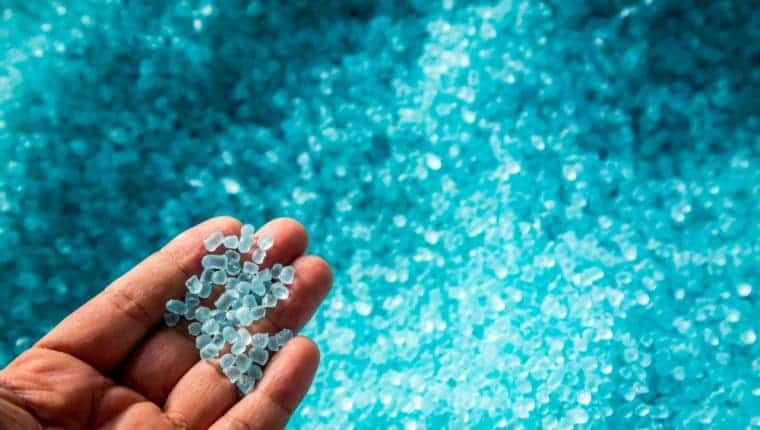Plastic has probably been one of the most important developments of the 20th century. It replaced other materials because its cheap, lightweight and highly durable and now we can find it practically everywhere. It has many types, each of them with different features and purposes.
But the downsides of plastic have also become abundantly clear in recent years: it’s an environmental disaster. Let’s have a look at the types of plastic, what their pros and cons are, and whether they can be recycled or not.

Plastic facts
But let’s start with the basics. Plastic is essentially the generic name given to a series of substances with similar molecular structures and characteristics, whose greatest virtue is to have elasticity and flexibility during a temperature range, thus allowing its molding and adaptation to various forms
The name comes from its eminent plasticity, that is, its ease in acquiring certain forms. Plastics are synthetic materials and generally petroleum-based products, obtained through polymerization — the semi-natural multiplication of long chains of carbon atoms, thus giving rise to a hot and cold resistant malleable organic substance.
It’s a highly versatile material thanks to its light weight, pleasant touch and resistance to both biological and environmental degradation (except for prolonged exposure to UV rays). These properties are difficult to achieve with other elements and make plastic a blessing and a problem at the same time; on one hand, its resilience makes it so desirable as a material, but on the other hand, it’s also what makes it an environmental nightmare.
Since it is the most useful and effective synthetic material in human history, plastic is also the main source of solid contamination of the planet. Some of its types can be recycled, although its production is much cheaper and simpler than its reuse. That’s why there haven’t been many efforts to recycle it so far.
Looking at some numbers can also help to paint the picture. Half of all plastics ever manufactured are estimated to have been made in the last 15 years. Production rose from 2.3 million tons in 1950 to 448 million tons in 2015. The trend is expected to continue and double by 2050.
Main types of plastics
You have probably seen that most plastics have a recycling number with a symbol. That’s, in fact, the most used way to classify them, known as the plastics recycling code or plastics identification code. It was created by the plastics industry to identify the type of resin plastic a product is made of.
Generally speaking, there are seven types of plastic:
- Plastic PET — type 1 plastic. This type of plastic is polyethylene terephthalate, which is transparent and does not breathe. It is one of the most recycled plastics since it can be found in plastic wrap, plastic bottles, food containers, and so on. On the surface of these products, there’s the symbol of three arrows forming a triangle (which indicates that it is a recyclable product) with the number 1 in the center.

- Plastic HDPE — type 2 plastic. This plastic is called high-density polyethylene and it is indicated by the number 2 inside the arrow triangle. It is found in products such as cardboard packaging, other food containers, containers of cosmetic products, cleaning products, and some pipes. It has a good impact resistance; it is solid and flexible as well as very light.
- Plastic PVC — type 3 plastic. Also known as PVC, polyvinylchloride is used to make pipes, gutters, cables, some bottles and food packages, liquid detergent bottles, traffic cones, and so on. It is one of the most dangerous plastics for our health and for the environment and you can identify it by number 3. It has a low density and good impact resistance.

- Plastic LDPE — type 4 plastic. It is called low-density polyethylene and is coded with the number 4 in the center of the recycling image. It is a recyclable plastic that is used in frozen bags, garbage bags, transparent kitchen paper or film, soft plastic bottles, etc. It has a good chemical and thermal resistance and its highly flexible.
- Plastic PP — type 5 plastic. Polypropylene is highly present in construction and the automobile industry, but also in drinking straws and plastic caps and caps of some containers. This recyclable plastic is marked with the number 5 inside the arrow symbol. It has great resistance against various chemical solvents, as well as against alkalis and acids.

- Plastic PS — type 6 plastic. Polystyrene is marked according to the recycling code as the number 6 inside the triangle with arrows. It’s light, water-resistant and excellent thermal and electrical insulator. That’s why it can be found in toys, cutlery, packaging and white cork used to package and protect electronic products and appliances. The outer cover of most computers is also made of polystyrene.
- Other plastics — type 7 plastic. The last category, also represented by the letter O, includes all non-recyclable plastics. These cannot be recycled because they are usually mixtures of some of the aforementioned or they are others that are not treatable for technical reasons. They cannot be recycled, but they can be reused without problems and are very useful for many crafts and uses. Within this group, the most common are polycarbonates.
Other types of plastics
Apart from the classification of plastics already explained, there are more ways to classify them and there are more types of plastics. They can be classified according to its size (macro or micro), its biodegradation capacity (beyond whether or not they are recycled at recycling plants), and so on.
Here are some of the other types of plastics:
- Bioplastics. They are plastics that were created from biological materials such as plants, instead of petroleum. They are created from polylactic acids that can be found in plants such as corn and sugarcane, or from polyhydroxyalkanoates produced by microorganisms. They can be found in food packaging and medical devices.
- Biodegradable plastics. Sometimes they are confused with the previous ones, but in this case, it is about those that can be degraded by some microorganisms under specific environmental conditions. By degrading them, these microorganisms convert the plastic into biomass, gases, and water.
- Thermoplastics. Thermoplastics melt when heated and when they cool, they become hard again. These are polymers that melt and can be modeled again, virtually continuously and indefinitely. Due to this chemical behavior, thermoplastics are recycled by the mechanical recycling process. Some examples are polycarbonate and polyethylene.
- Thermostable plastics. Contrary to thermoplastics, there are also thermostable plastics. These are materials that once become hot and mold can no longer melt or fuse again and therefore do not change shape. These are some examples of thermosetting plastics: silicones, melamine and vulcanized rubber.

- Microplastics. Another type of plastics well known today are microplastics, recently their contamination in the environment and the danger they pose to the health of all have been recognized. These are small synthetic particles that originate from some petroleum derivatives. Specifically, its size is less than 5 mm and they reach us through food that comes from the sea, among other means.
Plastic is, without a doubt, a wonder material. Just look around you, it’s everywhere. But therein also lies the problem — it’s everywhere, and it doesn’t decompose. Plastic simply breaks into smaller and smaller pieces, which stay around for centuries and often end up in the food chain.
Studies have shown that we probably ingest microplastic ourselves. Furthermore, most of the world’s plastic isn’t recycled. A recent report found that even plastic that is supposed to be recycled often isn’t. It typically ends up in oceans, landfills, or is burned.
Globally, less than 10% of the plastic we produce is recycled. We need to do better.


